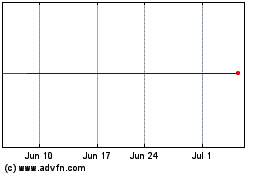High-Speed, Wireless Communications Technology From Harris Corporation Helps Battle California Firestorms
December 18 2003 - 8:17AM
PR Newswire (US)
High-Speed, Wireless Communications Technology From Harris
Corporation Helps Battle California Firestorms MELBOURNE, Fla.,
Dec. 18 /PRNewswire-FirstCall/ -- High-speed, wireless
communications networking technology developed by Harris
Corporation for the U.S. military played a role in helping to
battle the devastating Simi Valley fire in Los Angeles, California
in late October. For the first time, the company's SecNet 11(R)
Secure Wireless Local Area Network (SWLAN) product was installed
onboard firefighting helicopters where it helped to reduce from
four hours to just 18 minutes the time required to transmit
critical frontline data and video to the fire command center,
greatly enhancing situational awareness and facilitating more rapid
firefighter response. "We are extremely proud of the role that
Harris technology played in helping to fight this deadly fire,"
said Bob Henry, corporate senior VP and president, Harris
Government Communications Systems Division (GCSD). "This event also
demonstrates how SecNet 11 technology can be applied successfully
in the future to other situational awareness requirements that may
arise under Homeland Security-related efforts." Harris
representatives rushed to Los Angeles by air and sea following an
urgent request for assistance that was coordinated by the U.S.
Naval Undersea Warfare Center (NUWC) Division in Keyport,
Washington. NUWC had received the call for aid on October 28 from
the Los Angeles Fire Department through Archangel, an organization
that operates under the Department of Homeland Security (DHS) and
whose goal is to help the City of Los Angeles prevent and recover
from terrorist attacks. Once on site, Harris and Navy personnel
worked closely together and with the LA Fire Department to
transform what is essentially a shipboard, combat communications
and situational awareness system into one that could be installed
on helicopters and used from the air to track fires on the ground.
The goal was to combine the Navy's command and control technology
with Harris' wireless networking capabilities to allow helicopters
to fly the fire line, quickly gather data and video, compress this
information and transmit it wirelessly to the Air Operations
Command (AOC) center and then continue to fly to the next fire
location without landing. Previously, the data gathered was
downloaded to an onboard computer, then delivered by hand to the
AOC, where the information was printed and then hand-delivered
again to the fire command center - resulting in a lag time that
consumed four precious hours before firefighters had a precise
location to set up operations and defend both themselves and others
from encroaching flames. Within just two days, the team had
developed a system diagram, increased the helicopter's antenna
transmit power, bench tested the overall system, bench tested the
ground-to-helicopter communications, completed installation, and
flew several operational test missions that provided critical data,
streaming video, GPS, VoIP and imagery. The time required to
acquire and deliver this information was reduced from three or four
hours to 18 minutes. During the final test flights, the data links
were updated once per second and provided real-time fire positions
between the helicopters and the command post, where the data was
instantly converted to video mapping displays and simultaneously
posted to a website available to the Incident Commander. Because
weather conditions improved by November 1, the system was not fully
employed: however, two tactical missions demonstrated the
successful integration of naval combat systems technologies to
support firefighting efforts. "During CV-TSC's involvement in the
Los Angeles fires, Harris Corporation's SecNet 11 product made it
possible for our Keyport engineers to exchange data from the
fire-spotting helicopters to the ground station, in a secure mode,"
said Commander John M. Jorgensen, Project Manager, Aircraft Carrier
Tactical Support Center (CV-TSC). "We have been able to leapfrog an
entire generation of technology with this secure, compact network
card. We look forward to incorporating more of this off-the-shelf
product line into our command and control processes." Harris SecNet
11 enables military and government users to communicate multimedia
information -- including data, voice and video -- through an
untethered, Type 1, secure wireless network at an unprecedented 11
Megabits- per-second (Mbps). This technology completely eliminates
the need for wires and bulky encryption devices traditionally
required for communicating secret level data, and features fast
set-up, lightweight design, and low-power consumption. Based on the
IEEE 802.11b standard, the SecNet 11 PC Card has been certified as
part of the National Security Agency's (NSA) Commercial COMSEC
Evaluation Program (CCEP). Harris GCSD, one of five divisions
within Harris Corporation, conducts advanced research studies,
develops prototypes, and produces and supports state-of-the-art,
assured communications and information systems that solve the
mission-critical communications challenges of its military and
government customers, while serving as the technology base for the
company's diverse commercial businesses. Harris Corporation, which
also provides tactical radio, microwave, broadcast, and network
products and systems, serves customers in more than 150 countries.
For more information, visit http://www.harris.com/. Sound
interesting? Find great jobs at Harris:
http://www.careers.harris.com/ DATASOURCE: Harris Corporation
CONTACT: Sleighton Meyer, Government Communications Systems
Division, +1-321-727-6514, or ; or Tom Hausman, Corporate
Headquarters, +1-321-727-9131, or , both of Harris Corporation Web
site: http://www.harris.com/
Copyright
Harris (NYSE:HRS)
Historical Stock Chart
From Jun 2024 to Jul 2024

Harris (NYSE:HRS)
Historical Stock Chart
From Jul 2023 to Jul 2024
